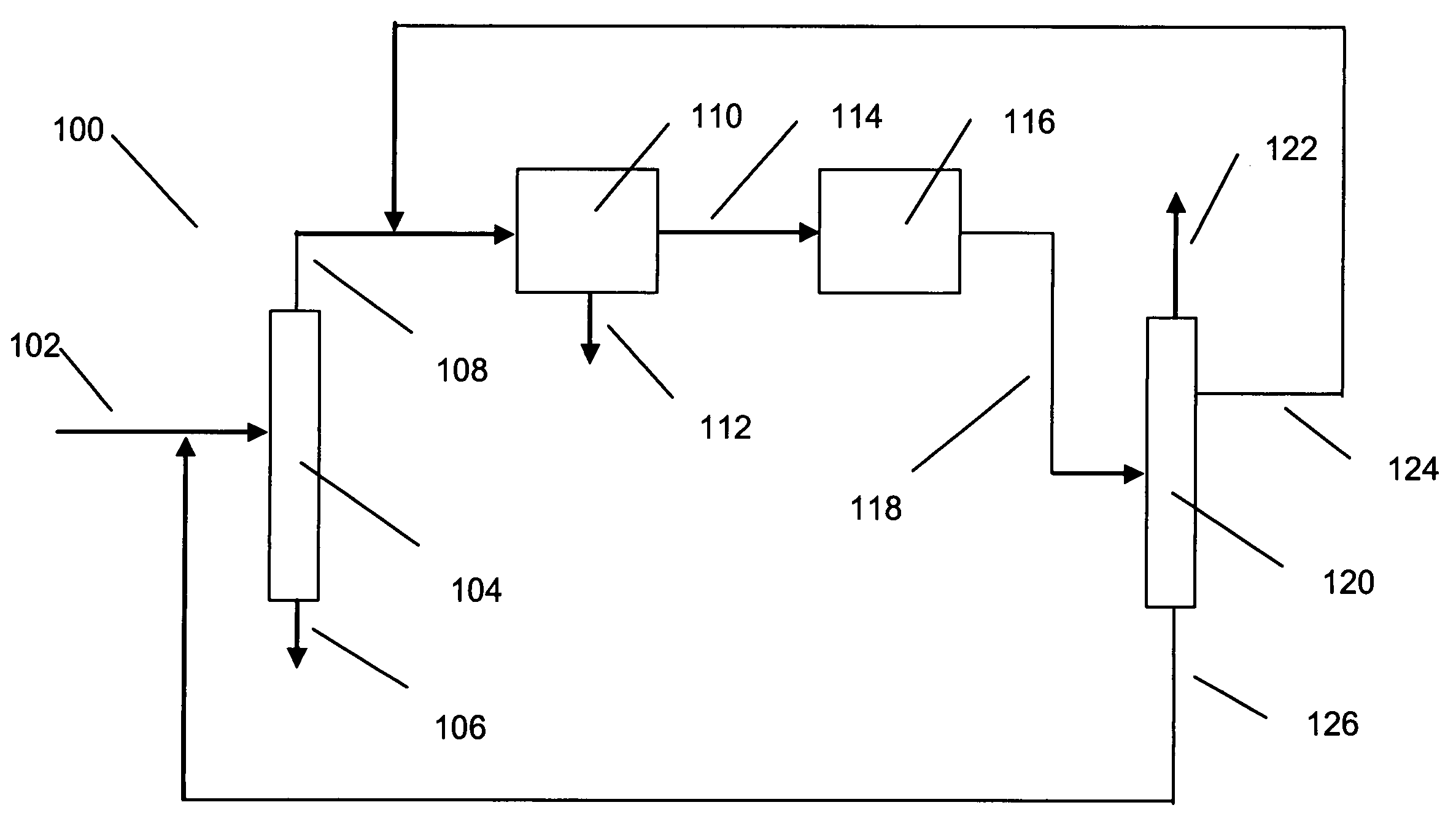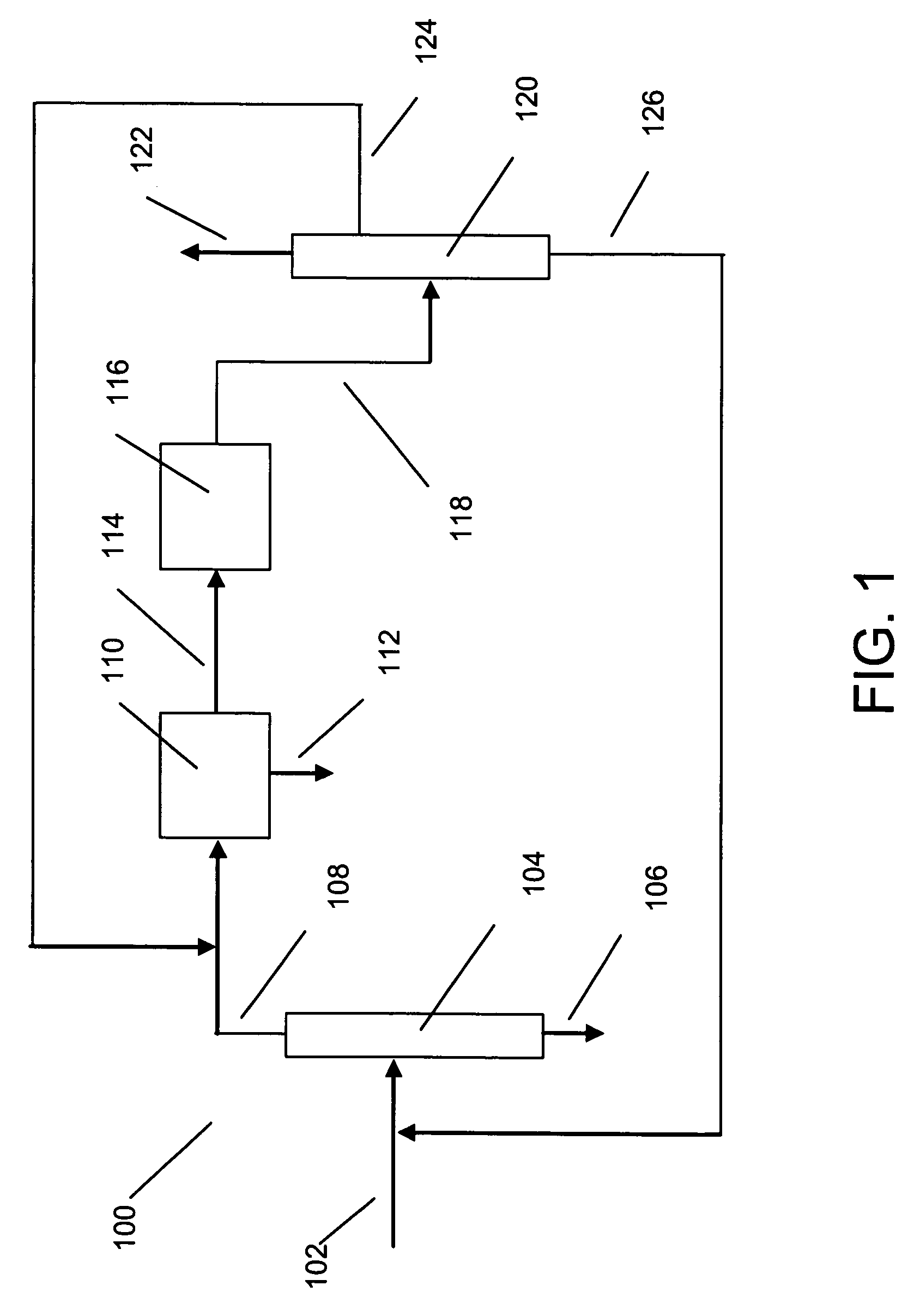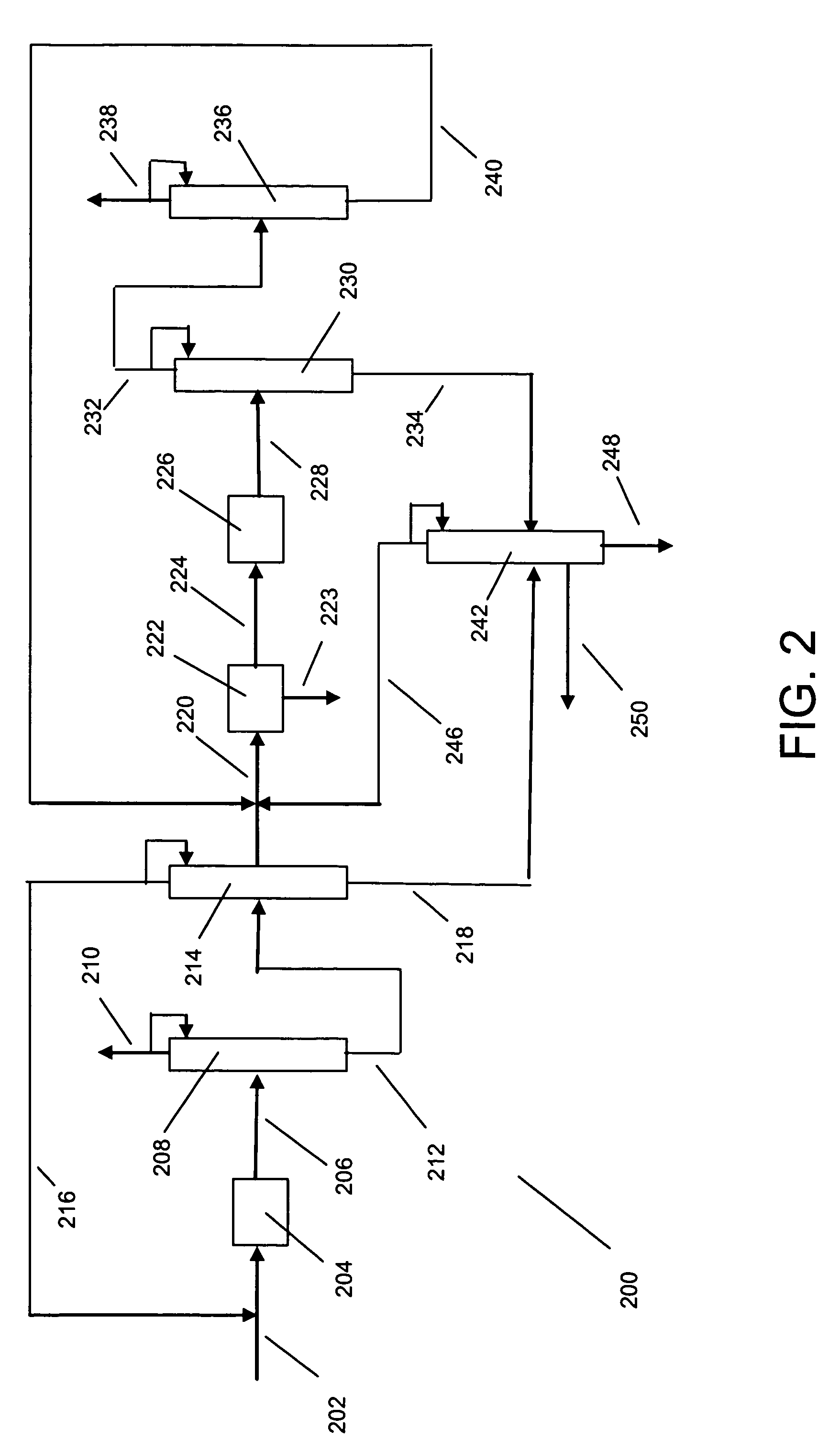Process for making xylene isomer using a deheptanizer with a side draw recycle
a recycling and deheptanizer technology, applied in the field of xylene isomer making processes, can solve the problems of high reflux to feed ratio, difficult separation or conversion, and substantial reboiler energy consumption, and achieve the effect of reducing reboiler energy consumption
- Summary
- Abstract
- Description
- Claims
- Application Information
AI Technical Summary
Benefits of technology
Problems solved by technology
Method used
Image
Examples
Embodiment Construction
[0015]The raw material for making xylenes is usually derived from naphtha or pygas. Normally, a raw material stream is subjected to pretreatments such as hydrotreating to remove sulfur and nitrogen compounds, and then the stream is subjected to reforming to generate aromatic compounds. The reforming is under sufficiently severe conditions that a wide range of aromatic compounds is produced including sought xylenes as well as benzene, toluene and C9+ aromatics. The reformate is usually subjected to olefin saturation conditions. Lights such as butanes are removed by distillation, and higher molecular weight aliphatics are removed by extraction. The resulting aromatics-containing stream can be separated by distillation into various components. For instance, the C8 aromatics (xylenes and ethylbenzene) can be fed to a xylene isomer recovery unit. Benzene may be recovered as a raw material for other petrochemical processes, and toluene can be subjected to disproportionation to generate C8...
PUM
| Property | Measurement | Unit |
|---|---|---|
| mass | aaaaa | aaaaa |
| boiling | aaaaa | aaaaa |
| boiling fraction | aaaaa | aaaaa |
Abstract
Description
Claims
Application Information
 Login to View More
Login to View More - R&D
- Intellectual Property
- Life Sciences
- Materials
- Tech Scout
- Unparalleled Data Quality
- Higher Quality Content
- 60% Fewer Hallucinations
Browse by: Latest US Patents, China's latest patents, Technical Efficacy Thesaurus, Application Domain, Technology Topic, Popular Technical Reports.
© 2025 PatSnap. All rights reserved.Legal|Privacy policy|Modern Slavery Act Transparency Statement|Sitemap|About US| Contact US: help@patsnap.com



